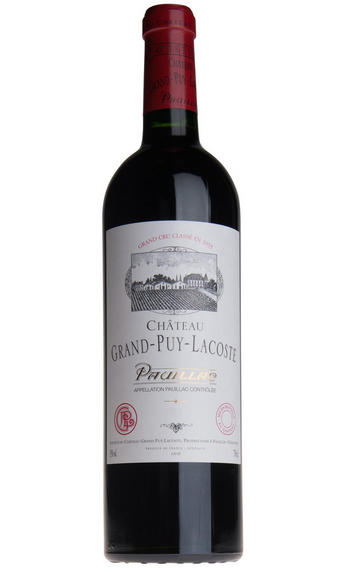
2017 Château Grand-Puy-Lacoste, Pauillac, Bordeaux
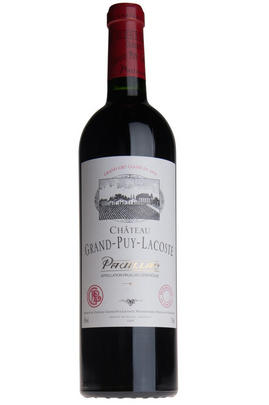
Critics reviews
The 2017 Grand-Puy-Lacoste was bottled at the end of June. Brambly black fruit, wild hedgerow, cedar and a touch of wild mint. This is classic "GPL". The palate is very well balanced with brine-tinged black fruit and a fine bead of acidity. It is beautifully focused with a refined, lightly spiced finish. You have to give this wine time in the glass because it really starts to "flow" after 5-10 minutes. Excellent.
Drink 2023 - 2050
Neal Martin, Vinous.com (January 2020)
The 2017 Grand-Puy-Lacoste is pretty and gracious, but it is also a little light in feel. There is good energy to the 2017, and plenty of Cabernet Sauvignon character. Today, the 2017 comes across as a bit austere and not especially charming. Let's see what happens with some time in bottle.
Drink 2025 - 2037
Antonio Galloni, Vinous.com (March 2020)
A lighter-framed vintage that will be ready to drink before the classic 10 year window. You see hints of this immediately in the plum colour, with shadings of a lighter raspberry around the rim even at four years old. The fruit is savoury blackcurrant and bilberry, with sculpted tannins that make their presence felt. Elegance and finesse show the Cabernet dominance, and the slate and smoke edge give complexity. Needs a few years but I would keep checking in, because there will come a point - as with the 2007s before it - that this will offer succulent drinking pleasure, and for me it is one of the clear standout successes of the 2017 vintage in Pauillac. Harvest September 15 to 29. 75% new oak, technical director Christel Spinner, consultant Eric Boissenot.
Drink 2025 - 2040
Jane Anson, JaneAnson.com (September 2021)
Tasted blind. Deep ruby colour. Deep liquorice and black fruit on a cool, brooding nose. This follows on the palate, which shows a prominent cedar note and intense, fresh black-fruit character. The tannins are rich and muscular but well defined. Tightly wound and full of potential, this is graceful and structured with a savoury, long finish.
Drink 2028 - 2045
Tom Parker MW, JancisRobinson.com (October 2021)
Composed of 80% Cabernet Sauvignon and 20% Merlot, the 2017 Grand-Puy-Lacoste was aged in French oak barriques, 75% new. Medium to deep garnet-purple colored, it opens with notes of fresh black raspberries, kirsch and crushed black and red currants with hints of spice box, fragrant soil and potpourri. Medium-bodied, the palate is frisky and fresh with a moderate level of approachable, soft tannins and compelling restraint on the finish.
Drink 2020 - 2030
Lisa Perrotti-Brown, Wine Advocate (March 2020)
Aromas of fresh raspberries with some lemon peel and fresh herbs follow through to a full to medium body. Fresh herbs and graphite highlight the wine. Chewy finish. Needs time to soften.
Better after 2022
James Suckling, JamesSuckling.com (January 2020)
Expressive and concentrated on the nose, showing cocoa-dusted blackcurrants, and vibrant vegetal notes. Powerful, rich and concentrated, with firm tannins and a long minty finish.
Drink 2022 - 2045
Georgina Hindle, Vincenzo Arnese, Andy Howard MW, Decanter.com (February 2022)
The 2017 Château Grand-Puy-Lacoste is an 80/20 split of Cabernet Sauvignon and Merlot that was harvested between the 15th and 29th of September. Yields were a solid 45 hectoliters per hectare. This medium-bodied, fresh, lightly textured 2017 is a perfect example of the vintage with its charming, ripe, yet more mid-weight style. Classic Pauillac cassis, lead pencil, leafy herbs, and gravelly minerality all emerge from the glass. It’s going to benefit from just short-term cellaring and keep for a decade or more.
Jeb Dunnuck, JebDunnuck.com (April 2018)
About this WINE
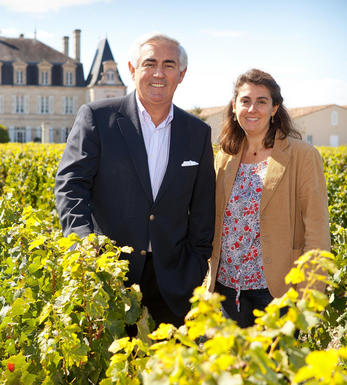
Chateau Grand-Puy-Lacoste
Château Grand-Puy-Lacoste is a 5ème Cru Classé Pauillac estate which has for many years been consistently outperforming its classification. Grand-Puy-Lacoste is located a couple of kilometres west of the town of Pauillac and is owned and run by François-Xavier Borie.
Grand-Puy-Lacoste's 90 hectares of vines (Cabernet Sauvignon 75%, Merlot 25%) are in one block surrounding the substantial 19th century château and lie on deep gravel beds over limestone. The grapes are fermented in temperature-controlled stainless steel vats and the wine is then matured in oak barriques (50% new) for 18 months.
Grand-Puy-Lacoste combines marvellous cigar box perfume with rich blackcurrant and cassis fruit and velvety power which is the epitome of top class Pauillac at its very best.
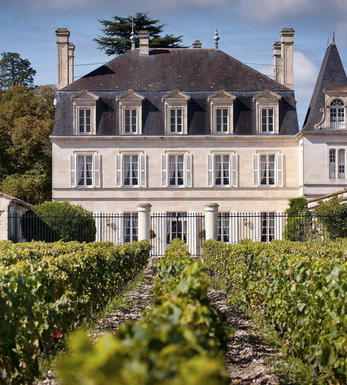
Pauillac
Pauillac is the aristocrat of the Médoc boasting boasting 75 percent of the region’s First Growths and with Grand Cru Classés representing 84 percent of Pauillac's production.
For a small town, surrounded by so many familiar and regal names, Pauillac imparts a slightly seedy impression. There are no grand hotels or restaurants – with the honourable exception of the establishments owned by Jean-Michel Cazes – rather a small port and yacht harbour, and a dominant petrochemical plant.
Yet outside the town, , there is arguably the greatest concentration of fabulous vineyards throughout all Bordeaux, including three of the five First Growths. Bordering St Estèphe to the north and St Julien to the south, Pauillac has fine, deep gravel soils with important iron and marl deposits, and a subtle, softly-rolling landscape, cut by a series of small streams running into the Gironde. The vineyards are located on two gravel-rich plateaux, one to the northwest of the town of Pauillac and the other to the south, with the vines reaching a greater depth than anywhere else in the Médoc.
Pauillac's first growths each have their own unique characteristics; Lafite Rothschild, tucked in the northern part of Pauillac on the St Estèphe border, produces Pauillac's most aromatically complex and subtly-flavoured wine. Mouton Rothschild's vineyards lie on a well-drained gravel ridge and - with its high percentage of Cabernet Sauvignon - can produce (in its best years) Pauillac's most decadently rich, fleshy and exotic wine.
Latour, arguably Bordeaux's most consistent First Growth, is located in southern Pauillac next to St Julien. Its soil is gravel-rich with superb drainage, and Latour's vines penetrate as far as five metres into the soil. It produces perhaps the most long-lived wines of the Médoc.
Recommended Châteaux
Ch. Lafite-Rothschild, Ch. Latour, Ch. Mouton-Rothschild, Ch. Pichon-Longueville Baron, Ch. Pichon Longueville Comtesse de Lalande, Ch. Lynch-Bages, Ch. Grand-Puy-Lacoste, Ch, Pontet-Canet, Les Forts de Latour, Ch. Haut-Batailley, Ch. Batailley, Ch. Haut-Bages Libéral.
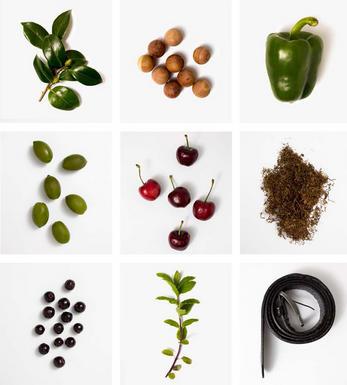
Cabernet Sauvignon Blend
Cabernet Sauvignon lends itself particularly well in blends with Merlot. This is actually the archetypal Bordeaux blend, though in different proportions in the sub-regions and sometimes topped up with Cabernet Franc, Malbec, and Petit Verdot.
In the Médoc and Graves the percentage of Cabernet Sauvignon in the blend can range from 95% (Mouton-Rothschild) to as low as 40%. It is particularly suited to the dry, warm, free- draining, gravel-rich soils and is responsible for the redolent cassis characteristics as well as the depth of colour, tannic structure and pronounced acidity of Médoc wines. However 100% Cabernet Sauvignon wines can be slightly hollow-tasting in the middle palate and Merlot with its generous, fleshy fruit flavours acts as a perfect foil by filling in this cavity.
In St-Emilion and Pomerol, the blends are Merlot dominated as Cabernet Sauvignon can struggle to ripen there - when it is included, it adds structure and body to the wine. Sassicaia is the most famous Bordeaux blend in Italy and has spawned many imitations, whereby the blend is now firmly established in the New World and particularly in California and Australia.


Buying options
Add to wishlist
Description
Classified a Fifth Growth in 1855, Château Grand-Puy-Lacoste has long been recognised as an overachiever. The Borie family have produced a wonderful 2017, with plenty of rich black fruit aromas along with spicy cedar, clove and tobacco notes. Cabernet Sauvignon dominates with 80% of the blend, supplemented by juicy Merlot. The palate is silky with fine, well-integrated tannins and invigorating acidity. Decant for an hour and serve with roast lamb or a hearty vegetable stew.
Drink 2024 - 2037
Berry Bros. & Rudd
wine at a glance
Delivery and quality guarantee